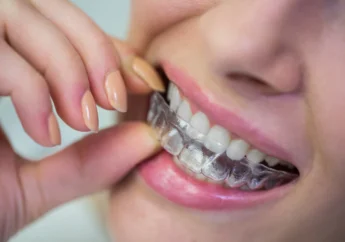Understanding And Addressing Teen Self-Harm: A Compassionate Approach
by Abdul Aziz Mondal Health Care Services Published on: 28 November 2023 Last Updated on: 18 January 2024

Teen self-harm is a deeply concerning and complex issue. It requires a nuanced understanding to effectively address and support affected individuals. The act of self-harm among teenagers is often a manifestation of underlying emotional pain, mental health struggles. It also reflects the difficulties in coping with life’s challenges. In this article, we will explore the various aspects of teen self-harm, its potential causes, and warning signs. The articles also discuss how parents, educators, and friends can offer compassionate support.
Understanding Teen Self-Harm:
Self-harm refers to the intentional act of inflicting physical harm on oneself. An individual falls into the pitfall in an attempt to cope with overwhelming emotions, stress, or psychological pain.
Self-harm can manifest in various forms, such as cutting, burning, or hitting. Recognizing that it is a symptom rather than a solution to the underlying issues is crucial. Teenagers engaging in self-harm are often grappling with intense emotions that they struggle to express or process in healthier ways.
Potential Causes:
Teenagers may turn to self-harm for a multitude of reasons, and it is essential to approach the issue with empathy and open-mindedness. Some common contributing factors include:
- Mental Health Challenges: Conditions like depression, anxiety, or personality disorders can significantly impact a teenager’s emotional well-being.
- Bullying and Peer Pressure: Experiencing bullying or feeling pressured by peers can create immense stress. Ultimately, it leads teenagers to resort to self-harm as a coping mechanism.
- Family Issues: Dysfunctional family dynamics or a lack of emotional support can contribute to a teenager’s emotional distress.
- Identity and Self-Esteem: Adolescence is a period of self-discovery, and issues related to identity, body image, and self-esteem can be overwhelming, driving some teens to self-harm.
- Trauma: Past traumatic experiences, such as abuse or loss, can have lasting effects on a teenager’s mental health and may contribute to self-harming behaviors.
Recognizing Warning Signs:
Identifying the warning signs of teen self-harm is crucial for early intervention. While the signs may vary among individuals, some common indicators include:
- Unexplained Injuries: Frequent injuries, such as cuts or burns, with vague or inconsistent explanations.
- Isolation: Withdrawal from friends, family, and social activities.
- Changes in Behavior: Sudden and noticeable changes in behavior, mood swings, or expressions of hopelessness.
- Wearing Concealing Clothing: Attempts to hide or cover up injuries, even in warm weather.
- Evidence of Self-Harming Tools: The discovery of sharp objects, lighters, or other tools that could be used for self-harm.
Supporting Teens In Need:
Addressing teen self-harm requires a multi-faceted and compassionate approach. Here are some strategies for parents, educators, and friends to support teenagers dealing with self-harm:
- Open Communication: Create a safe and non-judgmental space for teens to express their feelings. Encourage open communication, and listen without imposing judgment or solutions.
- Seek Professional Help: If you suspect or confirm self-harming behaviors, it is crucial to involve mental health professionals. Therapists, counselors, or psychiatrists can help identify the underlying issues and provide appropriate interventions.
- Educate Yourself: Understanding the complexities of self-harm and mental health is vital. Equip yourself with knowledge to better support and empathize with the challenges teens face.
- Promote Healthy Coping Mechanisms: Encourage the development of healthy coping mechanisms, such as journaling, art, exercise, or mindfulness practices, to help teens manage stress and emotions.
- Foster a Supportive Environment: Create an environment where teens feel loved, accepted, and supported. Positive relationships and a strong support system can play a significant role in a teenager’s mental health.
- Remove Access to Harmful Tools: Minimize access to objects that could be used for self-harm, such as sharp tools or substances.
- Involve the School: Collaborate with school counselors and teachers to create a supportive network for the teenager. Schools can play a crucial role in monitoring and addressing the issue.
Conclusion:
Teen self-harm is a complex issue that requires empathy, understanding, and a commitment to fostering a supportive environment. By recognizing the potential causes, understanding warning signs, and providing compassionate support, we can help teenagers navigate their challenges and build resilience. It is essential to remember that self-harm is not a choice but a cry for help, and with the right interventions, we can contribute to the healing and well-being of those struggling with this deeply personal and sensitive issue.
Read Also:







































































































